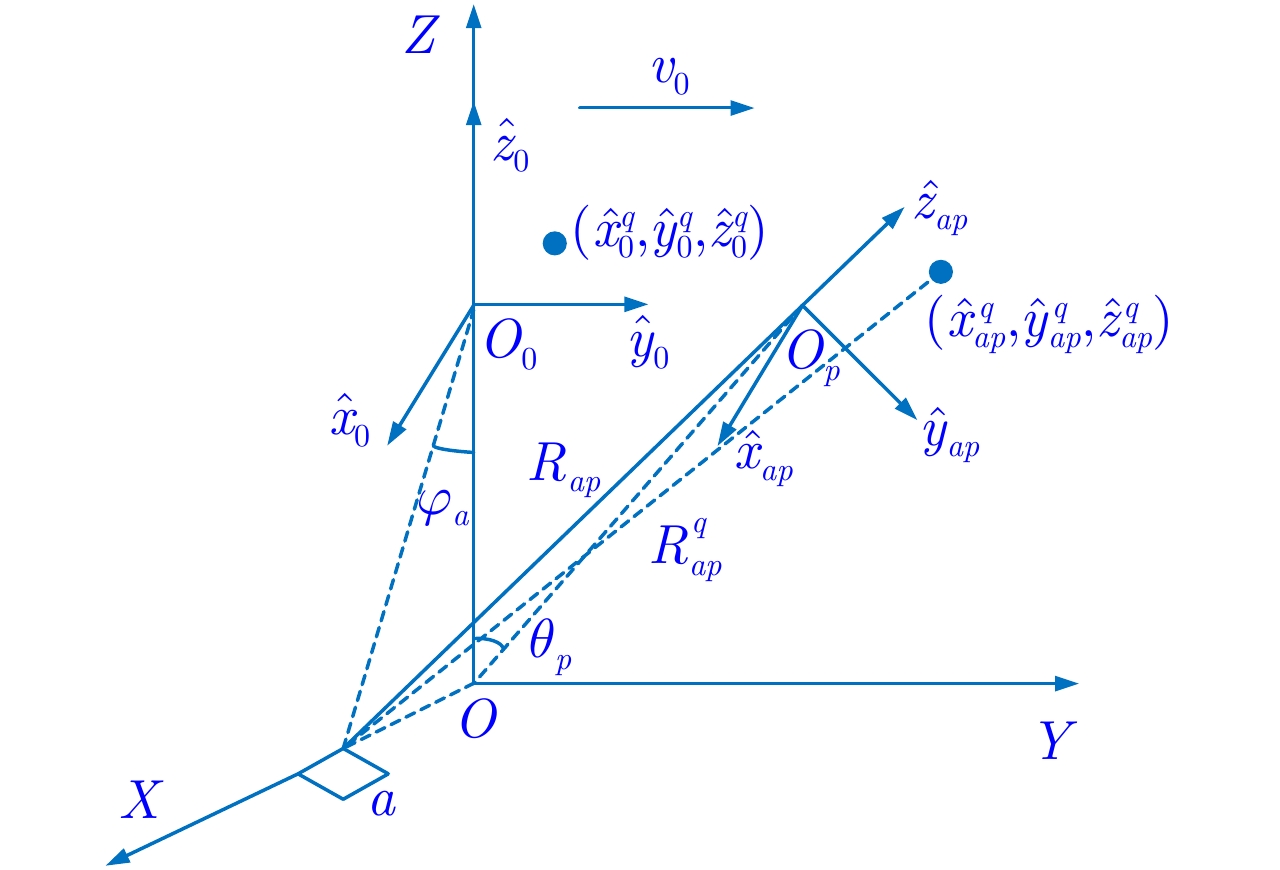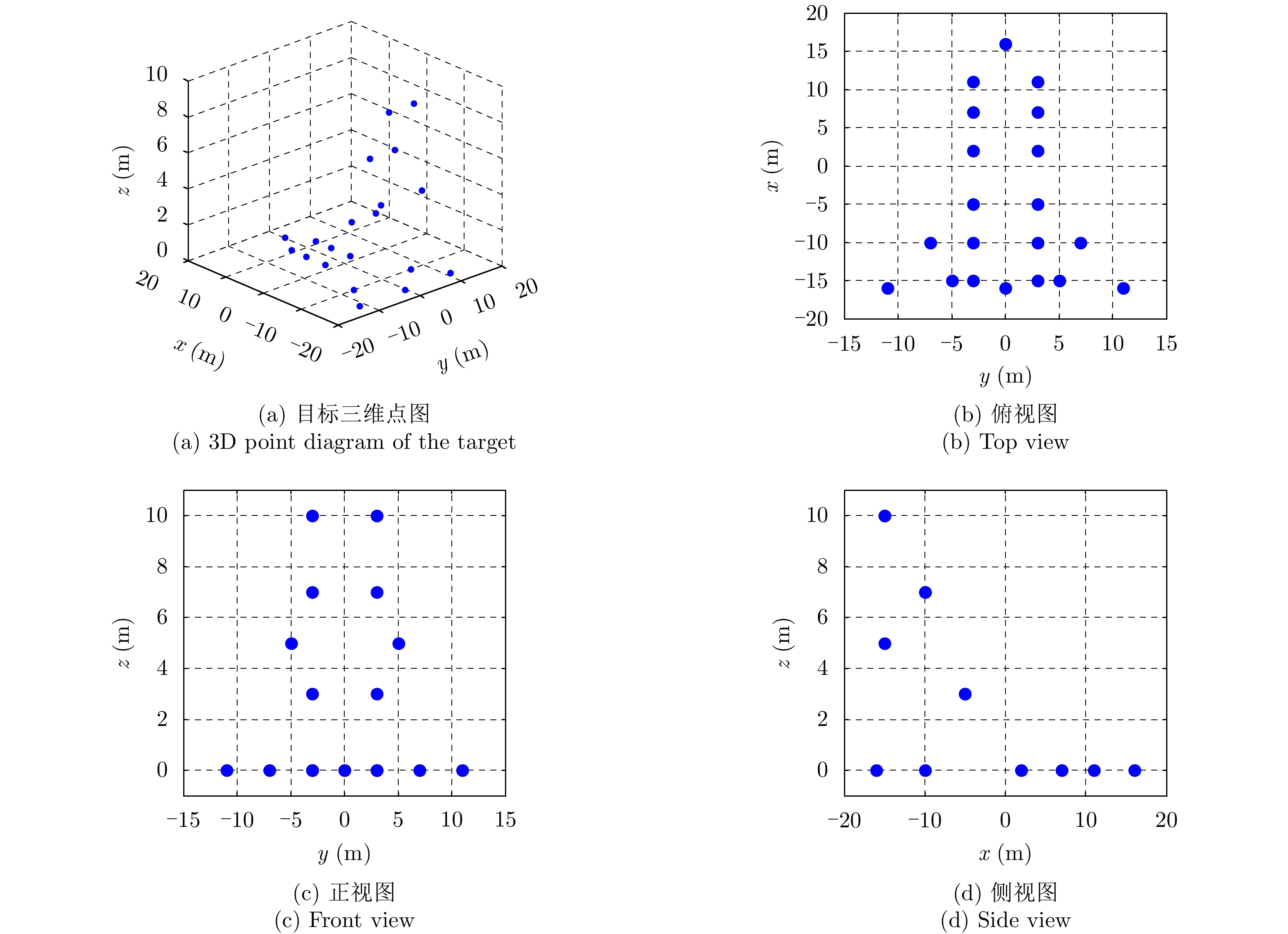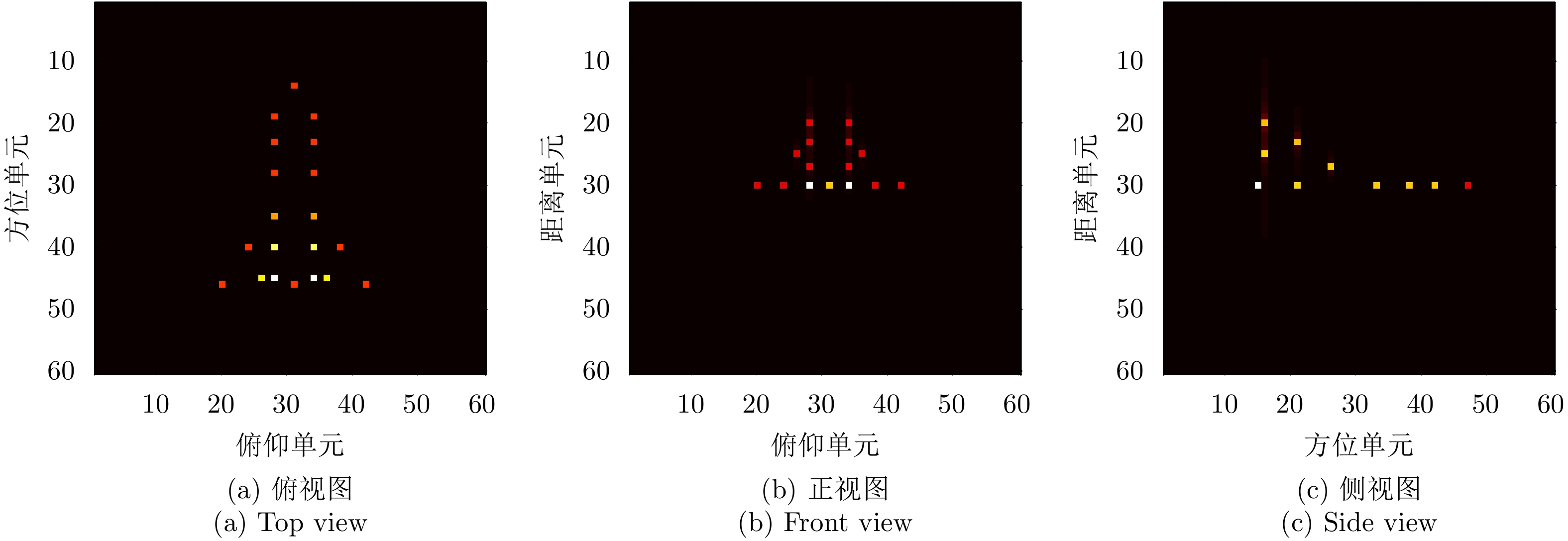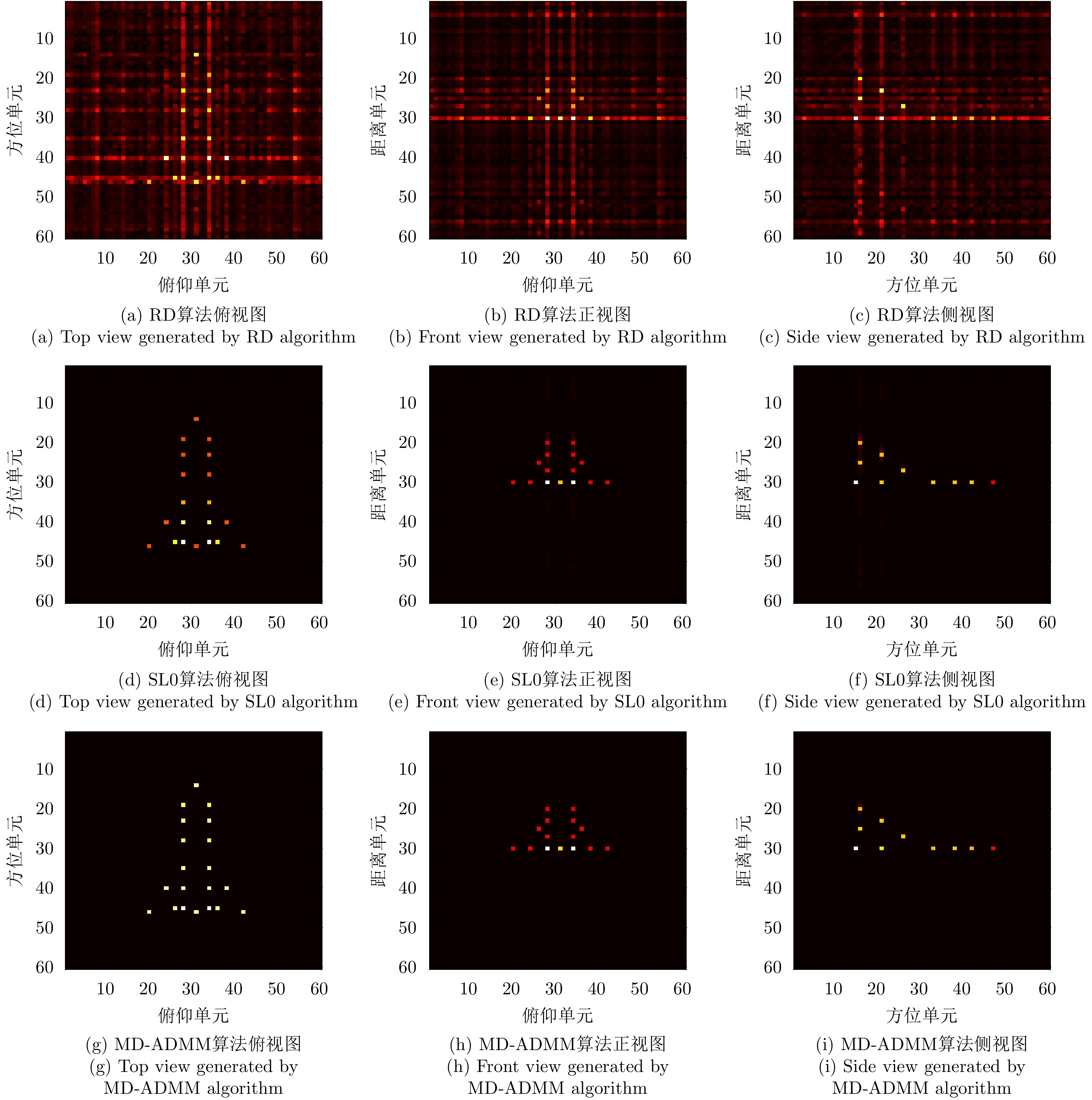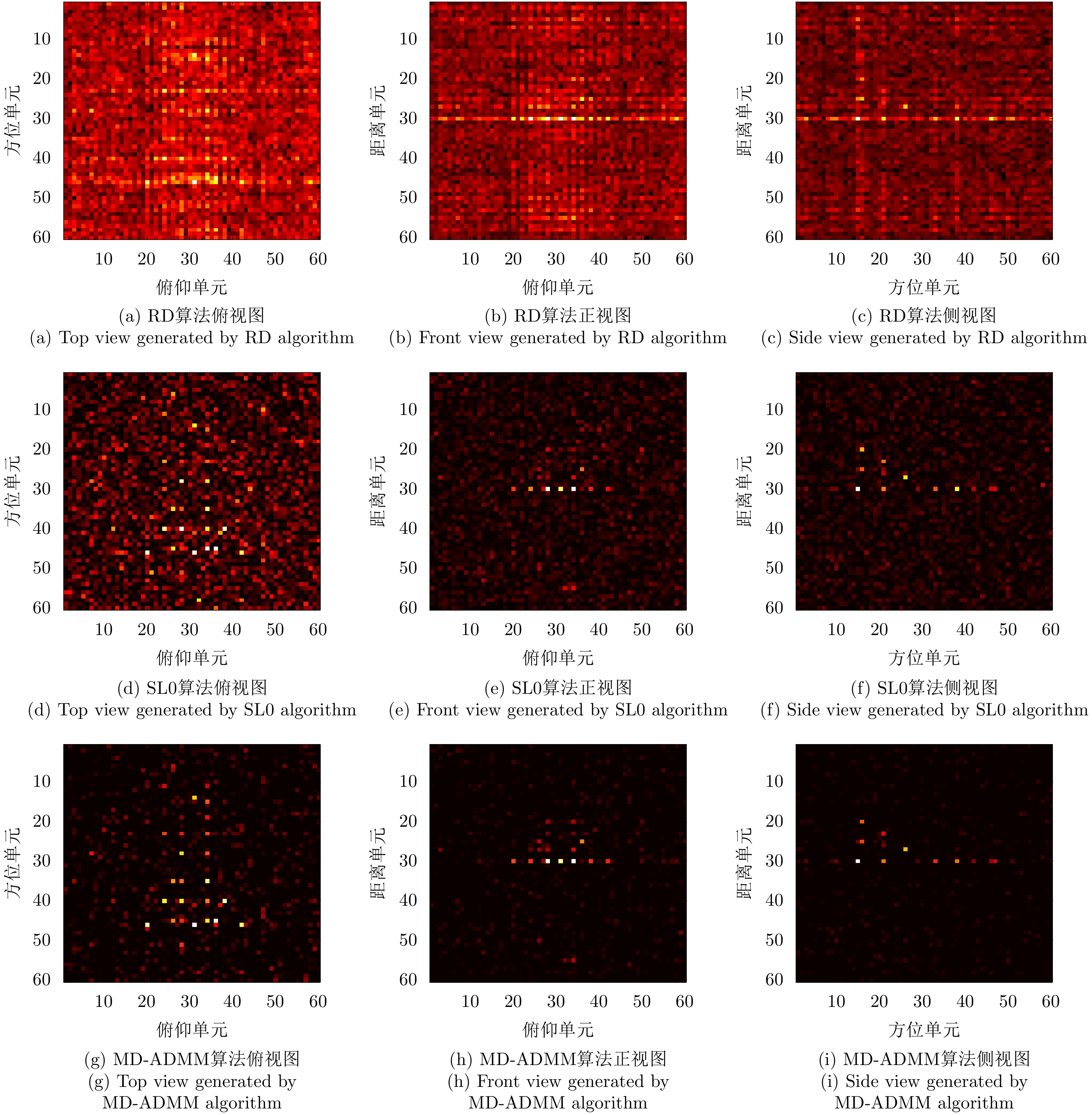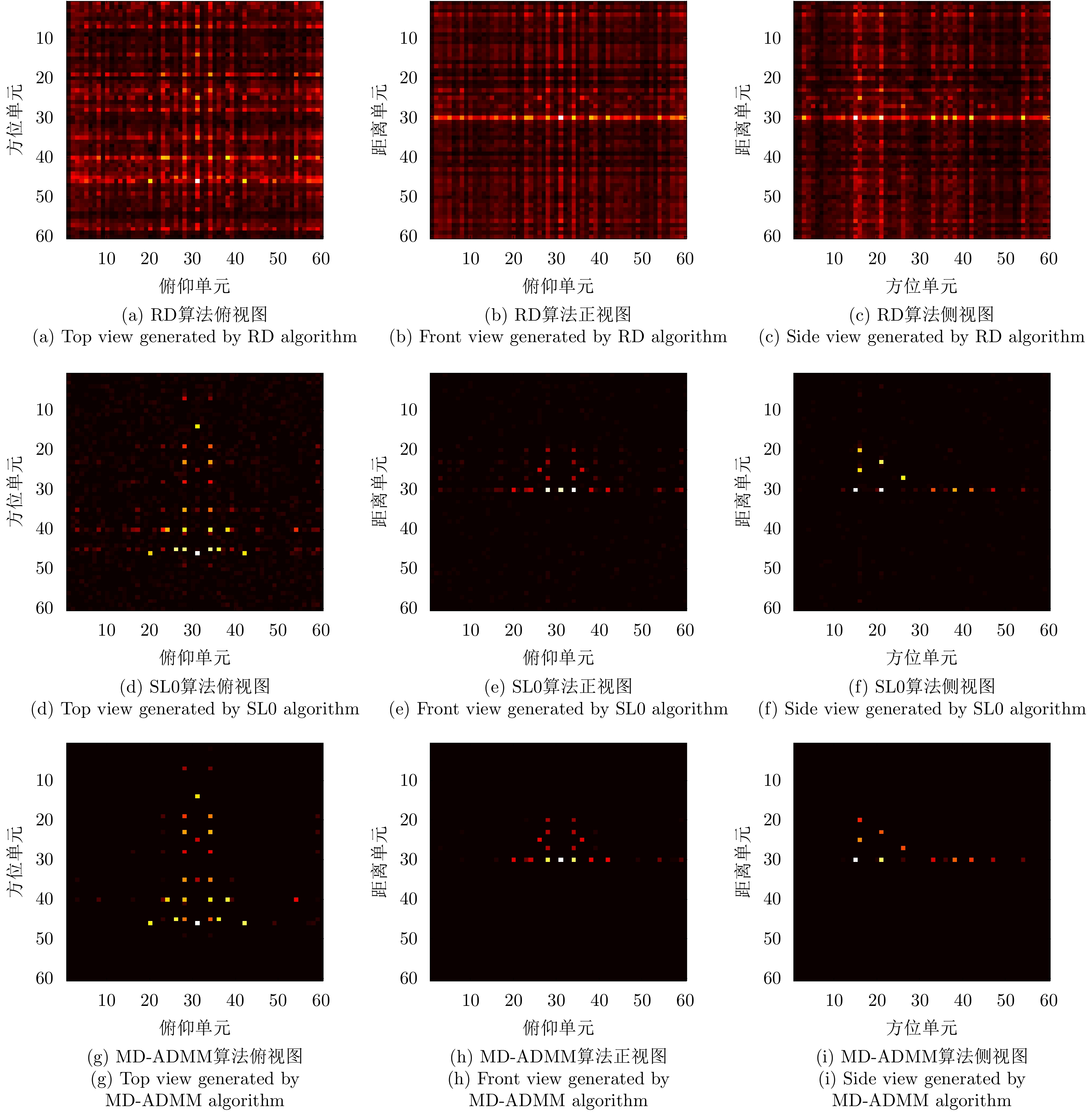- Home
- Articles & Issues
-
Data
- Dataset of Radar Detecting Sea
- SAR Dataset
- SARGroundObjectsTypes
- SARMV3D
- AIRSAT Constellation SAR Land Cover Classification Dataset
- 3DRIED
- UWB-HA4D
- LLS-LFMCWR
- FAIR-CSAR
- MSAR
- SDD-SAR
- FUSAR
- SpaceborneSAR3Dimaging
- Sea-land Segmentation
- SAR Multi-domain Ship Detection Dataset
- SAR-Airport
- Hilly and mountainous farmland time-series SAR and ground quadrat dataset
- SAR images for interference detection and suppression
- HP-SAR Evaluation & Analytical Dataset
- GDHuiYan-ATRNet
- Multi-System Maritime Low Observable Target Dataset
- DatasetinthePaper
- DatasetintheCompetition
- Report
- Course
- About
- Publish
- Editorial Board
- Chinese
| Citation: | DENG Likang, ZHANG Shuanghui, ZHANG Chi, et al. A multiple-input multiple-output inverse synthetic aperture radar imaging method based on multidimensional alternating direction method of multipliers[J]. Journal of Radars, 2021, 10(3): 416–431. doi: 10.12000/JR20132 |
A Multiple-Input Multiple-Output Inverse Synthetic Aperture Radar Imaging Method Based on Multidimensional Alternating Direction Method of Multipliers
DOI: 10.12000/JR20132 CSTR: 32380.14.JR20132
More Information-
Abstract
The disadvantages of the traditional Inverse Synthetic Aperture Radar (ISAR) imaging method based on Fourier transform include large data storage and long collection time. The Compressive Sensing (CS) theory can use limited data to restore an image with the sparsity of the image, reducing the cost of data collection. However for multidimensional data, the traditional compressive sensing methods need to convert three-dimensional data into a one-dimensional vector, causing the storage and calculation burden. Therefore, this study proposes a fast MultiDimensional Alternating Direction Method of Multipliers ((MD-ADMM)) sparse reconstruction method for Multiple-Input Multiple-Output ISAR (MIMO-ISAR) imaging. The CS model based on the tensor signal was established, and the model with the ADMM algorithm was optimized. The measured matrix is decomposed into a tensor modal product, and matrix inversion is replaced by tensor element division, significantly reducing memory consumption and computational burden. Fast ISAR imaging can be achieved by a small amount of data sampling by the proposed method. Compared with other tensor compressed sensing methods, this method has the advantages of stronger robustness, higher image quality, and computational efficiency. The effectiveness of the proposed method can be invalidated by simulated and measured data. -

-
References
[1] MUSMAN S, KERR D, and BACHMANN C. Automatic recognition of ISAR ship images[J]. IEEE Transactions on Aerospace and Electronic Systems, 1996, 32(4): 1392–1404. doi: 10.1109/7.543860[2] MARTORELLA M, GIUSTI E, DEMI L, et al. Target recognition by means of polarimetric ISAR images[J]. IEEE Transactions on Aerospace and Electronic Systems, 2011, 47(1): 225–239. doi: 10.1109/TAES.2011.5705672[3] BARANIUK R and STEEGHS P. Compressive radar imaging[C]. 2007 IEEE Radar Conference, Waltham, USA, 2007: 128–133.[4] DUAN Guangqing, WANG Dangwei, MA Xiaoyan, et al. Three-dimensional imaging via wideband MIMO radar system[J]. IEEE Geoscience and Remote Sensing Letters, 2010, 7(3): 445–449. doi: 10.1109/LGRS.2009.2038728[5] HU Xiaowei, TONG Ningning, WANG Heming, et al. Multiple-input-multiple-output radar superresolution three-dimensional imaging based on multidimensional smoothed L0[J]. Journal of Applied Remote Sensing, 2016, 10(3): 035017. doi: 10.1117/1.JRS.10.035017[6] WANG Yong and LI Xuelu. 3-D imaging based on combination of the ISAR technique and a MIMO radar system[J]. IEEE Transactions on Geoscience and Remote Sensing, 2018, 56(10): 6033–6054. doi: 0.1109/TGRS.2018.2829912[7] CANDES E J and WAKIN M B. An introduction to compressive sampling[J]. IEEE Signal Processing Magazine, 2008, 25(2): 21–30. doi: 10.1109/MSP.2007.914731[8] DONOHO D L. Compressed sensing[J]. IEEE Transactions on Information Theory, 2006, 52(4): 1289–1306. doi: 10.1109/TIT.2006.871582[9] DUARTE M F and BARANIUK R G. Kronecker compressive sensing[J]. IEEE Transactions on Image Processing, 2012, 21(2): 494–504. doi: 10.1109/TIP.2011.2165289[10] QIU Wei, MARTORELLA M, ZHOU Jianxiong, et al. Three-dimensional inverse synthetic aperture radar imaging based on compressive sensing[J]. IET Radar, Sonar & Navigation, 2015, 9(4): 411–420.[11] HU Xiaowei, TONG Ningning, GUO Yiduo, et al. MIMO radar 3-D imaging based on multi-dimensional sparse recovery and signal support prior information[J]. IEEE Sensors Journal, 2018, 18(8): 3152–3162. doi: 10.1109/JSEN.2018.2810705[12] QIU Wei, ZHOU Jianxiong, ZHAO Hongzhong, et al. Three-dimensional sparse turntable microwave imaging based on compressive sensing[J]. IEEE Geoscience and Remote Sensing Letters, 2015, 12(4): 826–830. doi: 10.1109/LGRS.2014.2363238[13] ZHANG Shuanghui, LIU Yongxiang, and LI Xiang. Computationally efficient sparse aperture ISAR autofocusing and imaging based on fast ADMM[J]. IEEE Transactions on Geoscience and Remote Sensing, 2020, 58(12): 8751–8765. doi: 10.1109/TGRS.2020.2990445[14] ZHU Yutao, SU Yi, and YU Wenxian. An ISAR imaging method based on MIMO technique[J]. IEEE Transactions on Geoscience and Remote Sensing, 2010, 48(8): 3290–3299. doi: 10.1109/TGRS.2010.2045230[15] BOYD S, PARIKH N, CHU E, et al. Distributed optimization and statistical learning via the alternating direction method of multipliers[J]. Foundations and Trends® in Machine Learning, 2011, 3(1): 1–122. -
Proportional views

- Figure 1. Geometry of imaging
- Figure 2. The equivalent transceiver array element for linear receiving and transmitting array elements
- Figure 3. Motion of the target
- Figure 4. 3D scatter of simulation target
- Figure 5. Three views of image with the complete echo
- Figure 6. Undersampling masks of random sampling and block sampling
- Figure 7. Image when sparsity is 50.0%
- Figure 8. Image when sparsity is 33.3%
- Figure 9. Image when sparsity is 25.0%
- Figure 10. The image of a sparsity of 50.0% by block sampling
- Figure 11. The image when sparsity is 25.0% and SNR=–5 dB
- Figure 12. The image when sparsity is 25.0% and SNR=0 dB
- Figure 13. The image when sparsity is 25.0% and SNR=10 dB
- Figure 14. Measured ISAR data results
- Figure 15. Measured ISAR data results under SNR=0 dB


 Submit Manuscript
Submit Manuscript Peer Review
Peer Review Editor Work
Editor Work





 DownLoad:
DownLoad:

